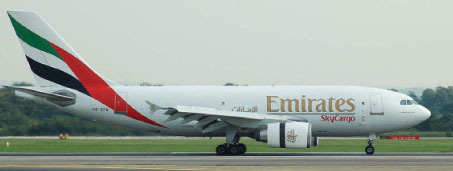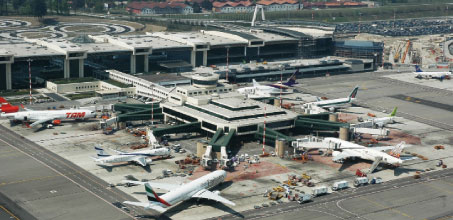The withdrawn flights represent around 35% of Malpensa’s total passenger traffic – overall throughput in 2007 was 24 million. Of the 250 daily flights cancelled, 20 were long haul services, 20 medium haul and 210 short haul/domestic. Malpensa’s transfer traffic in 2007 represented 30% of the total and, following Alitalia’s decision, Demetrio does not expect that figure to exceed 15% this year. “Of course we cannot consider, in this moment, Malpensa still as a hub since the hub carrier has ceased its hub operations. We are, however, noticing a rapidly growing interest from both the intercontinental carriers and from the domestic and European short haul carriers in making agreements to feed the long haul flights,” he said.

Demetrio: “We are facing the Alitalia de-hubbing implementation like a window of opportunity to restructure SEA and make it more efficient. Even if the results for 2008 and 2009 will be heavily impacted by the traffic and revenue reduction, we believe that the coming years after 2010 will yield very positive results.”
Operationally, much of SEA Aeroporti di Milano’s know how relating to hub activity is now under-utilised, but it will be kept alive for a future hub carrier. “In the meantime, operations are more simple, although the replacement traffic of Alitalia is rapidly increasing and therefore maximum service and efficiency are required,” said Demetrio. “We are facing the Alitalia de-hubbing implementation like a window of opportunity to restructure SEA and make it more efficient. Even if the results for 2008 and 2009 will be heavily impacted by the traffic and revenue reduction, we believe that the coming years after 2010 will yield very positive results.”
SEA Aeroporti di Milano has launched legal proceedings against Alitalia in order to recover damages. “A legal proceeding is practically compulsory for any company which has to face such a situation and this is the main reason for the action. SEA has invested heavily in order to be able to service the hubbing activities of Alitalia at Malpensa and we are confident that at least part of the money invested will be recovered from this legal action,” said Demetrio.
Incredible Prospects for Cargo
Cargo activity at Malpensa is, at the moment, fully operative and growing continuously. 2007 closed with 490,000 tonnes handled, which represented a 16% increase year-on-year. Demetrio believes this increase to be a record worldwide. That growth is particularly impressive in the context of previous increases; 2006 saw 10% growth, 2005 – 6%, 2004 – 13%, and 2003 – 9.5%.
Alitalia has announced a possible dismissal of the all-cargo business in 2010. “If this was true, this would represent an incredible opportunity for other foreign and Italian freighters since Alitalia represents about 40% of the total volume,” said Demetrio. Most of the large all-cargo airlines already operate at Malpensa, including Cargolux, Cathay Pacific, Korean Air, Emirates, China, NCA, Malaysia, Etihad and CargoItalia. Demetrio expects that they, therefore, would most probably increase their capacity on the Milan market.
Exploring ‘self hubbing activity’
In terms of Malpensa’s commercial activities, the only negative effect that has been felt relates to transfer passengers. The vast majority of non-aviation business was, and still is, done with passengers originating at Malpensa; the number of these has not been affected by the Alitalia decision – on the contrary, that number keeps increasing. “Thanks to this, it has not been necessary to renegotiate conditions with our retailers. On the contrary, we don’t have enough space to respond to all the demands we have. Hopefully, with the opening of the third satellite in the next months, we will be able to accommodate additional customers,” said Demetrio.
There are six main elements to SEA Aeroporti di Milano’s strategy to face current challenges. These include:
- An immediate recovery of the O+D traffic by other airlines already operating the same routes, or via other European, American and Far East long haul carriers connecting through their hubs;
- A strong development of intercontinental point-to-point activity by opening new destinations and increasing frequencies on the existing ones;
- Further development of low cost activity, dedicating a separate terminal with low cost style and service, which lies approximately five kilometres from Malpensa, to the leading LCC;
- Identify a new hub carrier to recreate the hubbing activity in the mid term;
- Explore the possibility of the developing a sort of ‘self hubbing activity’ promoting transfers via Malpensa between different airlines; and
- Continue to grow strongly in the cargo business.

Most of the large all-cargo airlines already operate at Malpensa, including Cargolux, Cathay Pacific, Korean Air, Emirates, China, NCA, Malaysia, Etihad and CargoItalia.
Asked whether any changes are being considered to the structure/level of charges, Demetrio was unequivocal. “Of course not. Charges are regulated by the Government and therefore there is no possibility to intervene,” he said. “Also, we don’t see the need for that since Malpensa happens to be one of the most competitive airports in Europe. We have, however, commercial incentive plans for airlines wanting to start new long haul services and transfer activity and also we are willing to invest in co-marketing activities with such carriers.”
Looking forward, Demetrio firmly believes that five years from now Malpensa will have recovered its role as one of the major hubs in Europe and at the same time have developed a further increase in its point-to-point traffic. This optimism is largely based on the strength of the airport’s catchment area, which includes approximately 33 million potential O+D passengers with high spending power. This, explained Demetrio, places Milan and the Lombardy region, of which Milan is the capital, among the top three in Europe. One-sixth of Italy’s population lives in Lombardy and a quarter of the country’s GDP is produced in the region.
“We also believe that in five years the catchment area will increase even more thanks to the huge investments that will be made in terms of connectivity by road and by rail towards the north east and the south of our area. To the West, this has already happened with the opening of a new motorway junction which reduces the driving time from the Torino area to Malpensa down to a maximum of one hour – it was previously at least one hour and fifty minutes,” said Demetrio.

Demetrio firmly believes that five years from now Malpensa will have recovered its role as one of the major hubs in Europe and at the same time have developed a further increase in its point-to-point traffic.







